Reflection 150: Avoiding the Trap of Human Opinion Video Does it matter what others think of you? In other words, should you be concerned about the “opinions” of others? Yes and no. No, we should not be concerned in the sense that the only “opinion” that matters is that which is true. And the Truth is that which is in the Mind of God. And that Truth is not an opinion, it is the Truth. So, no, we ought not worry about opinions that do not reflect the Mind of God. However, we should be concerned about another’s opinion insofar as our love for them should draw us to help them arrive at the truth. Some are obstinate and hold to their opinion over the truth no matter what. This is beyond our control. But others are open and if we see an open mind and heart, we should also be open to any way that God wants to use us to help them shed their erroneous views in exchange for that which is in the Mind of God (See Diary #763). Reflect, especially, upon the tendency you have to become overly concerned about what people think or say about you. Do you allow this to influence you in an unhealthy way? Do you allow it to affect your own choices and focus in life? Remind yourself, this day, that all that matters is the truth. What is in the Mind of God? That’s what you should be concerned about. Recommit yourself to that truth and you will experience an immense amount of freedom. Lord, I turn to You who are the one and only source of all Truth. I seek to know and believe only that which resides in Your Mind. I choose this Truth over all the opinions of the world, and I choose to let go of my own opinions, preferring only to embrace what You reveal. Give me the grace to live always in the Truth. Jesus, I trust in You. |
Month: May 2021
9 Senate seats most likely to flip in 2022
BY MAX GREENWOOD – 05/29/21 06:13 PM EDTShare to Facebook Share to Twitter
Just In…
- 9 Senate seats most likely to flip in 2022CAMPAIGN — 12M 38S AGO
- Is Biden trying to avoid congressional review of Russia sanctions?OPINION — 26M 9S AGO
- White House urges court to toss lawsuit preventing states from importing prescription drugsCOURT BATTLES — 27M 23S AGO
- UK’s Boris Johnson gets married in private ceremonyIN THE KNOW — 1H 4M AGO
- How to get more rural kids to college? Universal broadband would helpOPINION — 1H 26M AGO
- Rep. Connolly calls for Biden to create Jan. 6 commissionHOUSE — 1H 37M AGO
- Sunday shows preview: Infrastructure push revs upSUNDAY TALK SHOWS — 1H 46M AGO
- Hillary Clinton responds to story about ‘posh’ restaurant outing with vaccine PSABLOG BRIEFING ROOM — 2H 21M AGO
VIEW ALLRelated News
- 00:50Your tax-deductible gift helps us feed the…Sponsored | World Food Program USA
- SponsoredLearn about your dog’s breed, behavior, and…
- Trump’s blog sees decline in online…
- Caitlyn Jenner vows to ‘cancel cancel culture…

Democratic control of Congress will be on the line next year as Republicans look to claw their way back into power after a disappointing 2020 election that cost them the White House and their Senate majority.
But despite the conventional wisdom that the party of a new president tends to lose ground in the midterms, Senate Democrats are staring down several offensive opportunities in 2022 as they look to expand their ultra-narrow majority in the upper chamber.
Still, the GOP has pickup opportunities of its own, especially in states that Democrats only managed to win recently.
Here are the nine Senate seats most likely to flip in 2022:
Pennsylvania
Sen. Pat Toomey’s (R-Pa.) coming retirement combined with President Biden’s narrow win here in 2020 have given Democrats what they see as one of their best opportunities to flip a Senate seat that has been held by Republicans for 50 of the past 52 years.
Of course, flipping Toomey’s seat won’t be easy. Former President Trump carried Pennsylvania in 2016 by less than 1 point, and many Republicans believe that his brand of conservative populism can propel them to victory once again in 2022. A number of GOP candidates are already vying for the mantle of Trump acolyte, and several more are still considering bids.
The Democratic primary field is also crowded, attracting candidates like Pennsylvania Lt. Gov. John Fetterman and state Rep. Malcolm Kenyatta, a surrogate for Biden during the 2020 campaign. More candidates could soon follow, including Rep. Conor Lamb (D-Pa.), who is said to be considering a Senate bid.
North Carolina
Like Toomey, Sen. Richard Burr (R-N.C.) is on his way out of the Senate, creating a wide-open race to replace him in a perennial battleground state.
Trump carried North Carolina in both 2016 and 2020. And Sen. Thom Tillis (R-N.C.) won reelection last year, despite an aggressive effort by Democrats to unseat him. But with Burr’s retirement and Trump no longer on the ballot, Democrats have an opportunity to win back one of North Carolina’s Senate seats.
A lot will depend on who emerges from the primaries. The Republican field has also drawn five candidates, including Rep. Ted Budd (R-N.C.), former Rep. Mark Walker (R-N.C.) and former Gov. Pat McCrory. Looming over the race for the GOP nomination is Lara Trump, the daughter-in-law of former President Trump, who has said she is considering a Senate bid.
Democrats are also expected to face a crowded primary. The top contenders include state Sen. Jeff Jackson, former state Supreme Court Chief Justice Cheri Beasley and former state Sen. Erica Smith, who unsuccessfully sought the Democratic Senate nomination in 2020.
Ohio
A longtime swing state, Ohio has lurched to the right in recent years, voting twice for Trump and handing Democrats a spate of difficult losses in down-ballot contests.
But Sen. Rob Portman’s (R-Ohio) announcement earlier this year that he won’t seek reelection laid the groundwork for a competitive Senate contest that Democrats believe they have a shot at winning.
Potentially working to Democrats’ advantage is the fact that only one candidate — Rep. Tim Ryan (D-Ohio) — has jumped into the primary so far. Others are still considering whether to compete for the nomination, including Ohio state House Minority Leader Emilia Sykes and Franklin County Commissioner Kevin Boyce.
Republicans, meanwhile, are scrambling for the support of Trump, believing that his endorsement will offer a one-way ticket to the nomination. The field so far includes former Ohio GOP Chairwoman Jane Timken, former state Treasurer Josh Mandel, businessman Bernie Moreno and investment banker Mike Gibbons, all of whom have sought to tie themselves to Trump.
Georgia
Georgia voters handed Democrats their current Senate majority in January when it elected Sens. Jon Ossoff and Raphael Warnock in a pair of runoffs. But Warnock is slated to appear on the ballot once again in 2022 to seek his first full term in office.
A longtime Republican stronghold, Georgia has become one of the nation’s fastest growing and most diverse battlegrounds. In 2022, Biden became the first Democratic presidential candidate to carry the Peach State since former President Clinton in 1992.ADVERTISING
But the GOP still remains a powerful force in the state, and the party sees Warnock as one of their top offensive targets in 2022.
The GOP primary field hasn’t shaped up yet, though a handful of well-known Republicans are already eyeing Warnock’s seat, including former Sen. Kelly Loeffler (R-Ga.), who lost to Warnock in the January runoff, and former NFL player Herschel Walker, whom Trump has personally urged to challenge Warnock.
Arizona
Sen. Mark Kelly’s (D-Ariz.) victory in 2020 gave Democrats control of both of Arizona’s Senate seats for the first time in nearly 70 years. But he’s slated to go up for reelection next year, and Republicans have put him near the top of their target list.
The Republican primary field is still taking shape, but the race could attract some of Trump’s most ardent allies. Reps. Andy Biggs (R-Ariz.) and Paul Gosar (R-Ariz.), two Trump acolytes who are among the most vocal defenders of the former president’s rigged election claims, have floated potential Senate runs.
State Attorney General Mark Brnovich is also considered a likely contender for the GOP Senate nomination, but unlike Gosar and Biggs, he has rejected Trump’s claims of a stolen election, earning him the ire of the former president.
Complicating things for the GOP is the fact that Trump lost Arizona in 2020, making him the first Republican presidential contender to face defeat in the state since 1996. Nevertheless, the Arizona Republican Party is still largely aligned with Trump’s wing of the GOP.
Wisconsin
The Senate race in Wisconsin is still taking shape, but Democrats are particularly eager to take out Sen. Ron Johnson (R-Wis.), a key Trump ally and archvillain for the left.
Johnson hasn’t yet said whether he’ll seek another term in the Senate, though he previously vowed not to run for a third term after winning reelection in 2016. It’s not clear whether he’ll stick to that pledge, and Wisconsin Republicans say he can still make the case for remaining in Washington.
Johnson’s silence has complicated things for both parties. No other Republican has jumped into the race out of deference to Johnson, effectively freezing the GOP contest for the time being.
And while the Democratic field has already drawn several candidates, including state Treasurer Sarah Godliewski, Milwaukee Bucks executive Alex Lasry and Outagamie County executive Tom Nelson, Johnson’s indecision has left Democrats without a clear opponent.https://990809c7ebbedb17b08df68cc03e2ca9.safeframe.googlesyndication.com/safeframe/1-0-38/html/container.html
Still, Democrats feel particularly empowered in Wisconsin after Biden carried the state in 2020 and reversed his party’s fortunes from 2016, when Trump’s victory there helped doom Hillary Clinton’s presidential campaign.
New Hampshire
Democrats are feeling good in New Hampshire heading into 2022 when Sen. Maggie Hassan (D-N.H.) will face her first reelection bid. Biden carried the state in 2020 by more than 7 points, while Sen. Jeanne Shaheen (D-N.H.) won reelection by more than 15 points.
But Republicans believe they have an opportunity to oust Hassan next year, especially if their top choice for the nomination, Gov. Chris Sununu, jumps into the race.
So far, only one Republican has announced his candidacy for the New Hampshire Senate seat, Don Balduc, a retired Army brigadier general who unsuccessfully sought the GOP Senate nomination last year. No other Republican has emerged yet as the party awaits Sununu’s decision.
Sununu is also weighing whether to run for a fourth term in the governor’s mansion or step back from elected office altogether and return to the private sector. He’s not expected to make a decision before the end of the state legislative session next month.
Nevada
Sen. Catherine Cortez Masto (D-Nev.) won’t be easy for Republicans to take down. But they argue that, with the right candidate, her seat could be up for grabs.
So far, no Republican has announced a challenge to Cortez Masto. But the GOP is hoping to recruit former state Attorney General Adam Laxalt, who lost a bid for governor in 2018, into the race, believing that he offers Republicans their best shot of ousting Nevada’s senior senator.
While Democrats have racked up a string of statewide victories in recent years, even they caution that Nevada remains competitive. Biden carried the state in November by only about 2 points, the same margin that both Clinton and Cortez Masto won Nevada by in 2016.
Sen. Jacky Rosen (D-Nev.) defeated former Sen. Dean Heller (R-Nev.) there in 2018 by a 5-point margin, but that victory came as part of a Democratic wave in the first midterms after Trump entered the White House.
Missouri
Missouri has shifted decidedly to the right in recent years. But Democrats and even some Republicans say there’s a chance that retiring Sen. Roy Blunt’s (R-Mo.) seat could come into play next year, depending on how the GOP primary shakes out.
A handful of Republicans have already jumped into the race to replace Blunt, including Missouri Attorney General Eric Schmitt and former Gov. Eric Greitens. But Greitens’s candidacy makes some Missouri Republicans nervous, given his controversial reputation.
- Rep. Connolly calls for Biden to create Jan. 6 commission
- Sicknick’s girlfriend: GOP decision to block Jan. 6 commission ‘…
Greitens resigned in 2018 in the face of mounting scandals that included accusations of campaign finance violations, an extramarital affair and blackmail. His decision to step down came as state legislators met to consider possible impeachment.
Some Republicans in Missouri and in Washington fear that if Greitens wins the nomination, it could open up an opportunity for Democrats in the general election, putting at risk a Senate seat that they believe should be a shoo-in for the GOP.
Other Republicans are considering jumping into the race, including several members of the state’s House delegation.
Saints who loved their in-laws

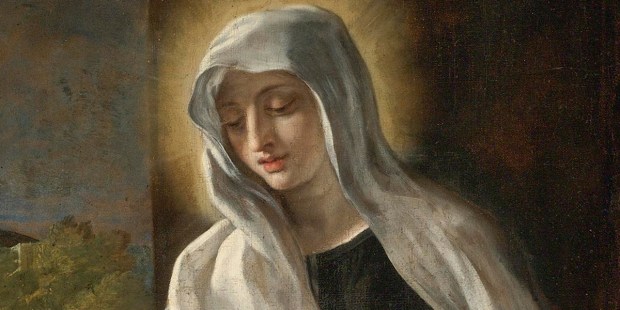
Meg Hunter-Kilmer – published on 05/29/21
These saints teach us how to love well, even with the difficulties that the union of two families can bring.
Whether you’re grateful for your wonderful in-laws, seeking intercession for difficult relationships with your family-by-marriage, or looking for an example of how to be a good in-law, most of us would benefit from getting to know a few saints who modeled kind and generous behavior with their in-laws. These saints teach us how to love well, even with the difficulties that the union of two families can bring.
Read about last week’s saints as well:

Read more:Saints who struggled with their in-laws
St. John the Georgian (d. 1002) was an Iberian nobleman and a military commander who ultimately separated from his wife (with her consent) to be a monk. After freeing his son (St. Euthymius the Illuminator) from his captivity as a hostage of the emperor in Constantinople, John was joined by his brother-in-law (St. John Thornikos). Together the three men founded the Iveron monastery on the famed Mount Athos.
St. Elizabeth of Portugal (1271-1336) was the queen consort of Portugal and a peacemaker. She ended a war between her father and her husband; many years later she intervened to stop another between her son and his son-in-law. This last intervention on behalf of her grandson-in-law was too much for her failing health and led to her death soon after.
St. Frances of Rome (1384-1440) was an Italian introvert who was so overwhelmed by the social life required of her as a nobleman’s wife that she had a nervous breakdown. After finding healing, she discovered that her sister-in-law Vanozza also longed for silence and prayer. The two began to work together, helping each other in their daily tasks so that each could retreat into silence more often, making a little monastery of their mansion.

PARTNER CONTENT
The Marian legacy of Saint Luke in Malta.
Blessed Lucy Yun Un-Hye (d. 1801) was a Korean woman who suffered gravely at the hands of her mother- and father-in-law, the parents of her husband Bl. Barnabas Jeong Gwang-Su. But she didn’t allow that to poison her against her sister-in-law; instead, she led Bl. Barbara Jeong Sun-mae to the faith. Barbara helped Lucy and Barnabas in their distribution of religious books until all three were arrested and martyred.
Bl. Columba Kang Wan-suk (1761-1802) was a Korean catechist and leader of the church whose mother-in-law loved her so much that when Columba’s husband divorced her, his mother chose not to stay with her son but to go with her ex-daughter-in-law. It was Columba who had brought her to the faith and Columba who led her in the faith until the day Columba was martyred.
Bl. Francis Choe Bong-han (1785-1815) was raised in a Christian family in Korea. Though drawn to celibacy, he submitted to pressure from his relatives and married the daughter of Bl. Barbara Ku Seong-yeol and Bl. Andrew Seo Seok-bong. He was arrested with his mother- and father-in-law during an Easter celebration. While in prison, Francis saw Barbara’s faith begin to fade. He encouraged her, saying, “It is a great honor and blessing to die for Christ.” He did the same for many others who wavered, earning himself a reputation as the leader of the Catholics in prison—and the torture warranted by his status as backbone of the community. Both Francis and Andrew died of their treatment before they could be martyred, but Barbara (strengthened by the encouragement of her son-in-law) was beheaded.
St. Michael Nguyễn Huy Mỹ (1804-1838) was a Vietnamese husband and father, the mayor of his village, a teetotaler, and a daily communicant who took great care to lead his children in prayer and to be a spiritual leader for his Christian village. When a persecution broke out, Michael was arrested with a priest (St. James Ðo Mai Nam) and his elderly father-in-law (St. Anthony Nguyễn Đích). In prison, Michael offered to take the place of his father-in-law when it was Anthony’s turn to be tortured. Three times he stood in for his father-in-law; in between torture sessions, he urged the older man to remain strong in the face of death. Michael’s wife and children visited them in prison to encourage them. The two men went on to be killed along with their priest.
Bl. Barbara Choe Jo-i (1782-1839) was a Korean woman who suffered greatly after the martyrdom of her father, Bl. Marcellinus Choe Chang-ju. Her suffering was only briefly interrupted during her short marriage, after which Barbara was left a young widow. But she wasn’t alone; her father-in-law, Bl. Peter Sin Tae-bo, welcomed her to stay in his home, where she lived for many years. When the two were arrested in 1827, Barbara was soon released, but continued to visit her father-in-law in prison, offering him whatever material and moral support she could for 12 years before she too was imprisoned and both were martyred.
St. Paul VI’s bold defense of the Eucharist
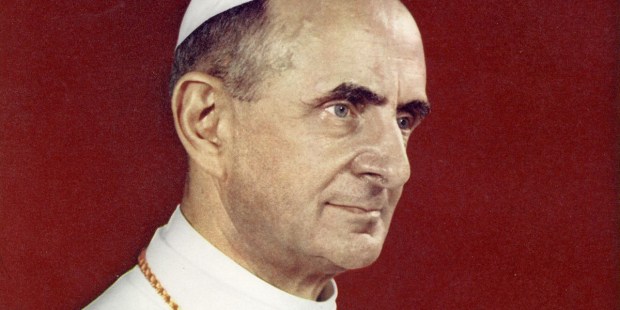
Philip Kosloski – published on 05/29/21
In the midst of the Second Vatican Council, Paul VI spoke firmly about the Real Presence of Jesus in the Eucharist.
One belief of the Catholic Church that is often confusing for many is the teaching that Jesus is truly present under the appearance of bread and wine in the Eucharist.
The theological name for this is “transubstantiation,” which the Catechism explains: “By the consecration of the bread and wine there takes place a change of the whole substance of the bread into the substance of the body of Christ our Lord and of the whole substance of the wine into the substance of his blood” (CCC 1376).
This means that while the appearance of bread and wine remain, the substance is changed (through the power of God) completely to the body and blood of Christ.
However, some mistakenly hold that the Eucharist is only a “symbol” of Jesus’ presence.
St. Paul VI forcefully rejected this idea and wrote about it in his encyclical, Mysterium fidei, written during the Second Vatican Council.
For the constant teaching that the Catholic Church has passed on to her catechumens, the understanding of the Christian people, the doctrine defined by the Council of Trent, the very words that Christ used when He instituted the Most Holy Eucharist, all require us to profess that “the Eucharist is the flesh of Our Savior Jesus Christ which suffered for our sins and which the Father in His loving kindness raised again.”

PARTNER CONTENT
The Marian legacy of Saint Luke in Malta.
He went on to reinforce this belief, making it crystal clear that the Eucharist is not merely a symbol.
To these words of St. Ignatius, we may well add those which Theodore of Mopsuestia, who is a faithful witness to the faith of the Church on this point, addressed to the people: “The Lord did not say: This is a symbol of my body, and this is a symbol of my blood, but rather: This is my body and my blood. He teaches us not to look to the nature of what lies before us and is perceived by the senses, because the giving of thanks and the words spoken over it have changed it into flesh and blood.”
St. Paul VI went so far as to warn parish priests to speak boldly about this truth of the Catholic faith.
After the Council of Trent, Our predecessor, Pius VI, issued a serious warning, on the occasion of the errors of the Synod of Pistoia, that parish priests not neglect to speak of transubstantiation, which is listed among the articles of the faith, in the course of carrying out their office of teaching.
Above all, Pope Paul VI had a firm belief in the Eucharist and wanted the whole Church to fully understand this great gift to humanity.
These gorgeous Catholic retreat centers are open this summer

Zelda Caldwell – published on 05/29/21
After all we’ve been through, it’s a good time to take time to recharge in a beautiful, inspiring setting.
The past year spent living in fear and isolation under the coronavirus pandemic and its accompanying lockdown has been difficult for many people.
For Catholics, for whom the Eucharist is the “source and summit of the Christian life,” doing without the sacraments has left many sorely in need of a spiritual reboot.
Aschurches beginning to reopen, it’s a good time to take stock and chart a course for spiritual growth. Why not jump-start a return to regular worship with a retreat?
Spiritual retreats are not just for priest and religious. In fact, the United States Conference of Catholic Bishops urges lay people to take advantage of opportunities to go on a retreat: “In the midst of your busy lives, a retreat opportunity affords you time of silence and clarity that cannot be found in the world.”
While many Catholic retreat centers remain closed, we found a few from our guide to beautiful retreat centers that are welcoming either groups or individuals. An added bonus: this list of retreats are all located in beautiful natural or architectural surroundings.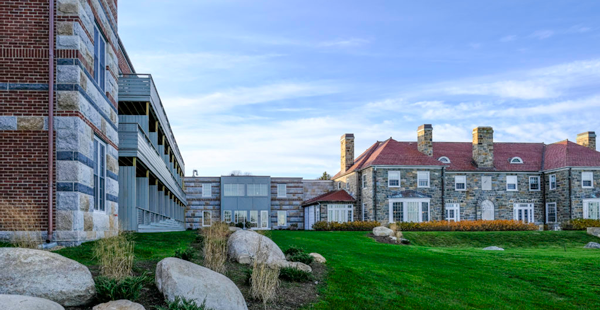 Launch the slideshow
Launch the slideshow
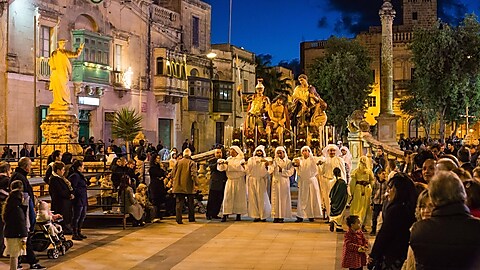
PARTNER CONTENT
The Maltese Archipelago, islands of St. Paul and the Virgin Mary.
1. Gonzaga/Eastern Point Retreat House in Gloucester, Massachusetts
Located in an old stone mansion overlooking the Atlantic Ocean, the Eastern Point Retreat House offers Jesuit retreats based on the exercises of St. Ignatius of Loyola.
2. New Camaldoli Hermitage in Big Sur, California
Since 1958, the monks of New Camaldoli Hermitage have welcomed guests to experience the peace their location overlooking the Pacific Ocean affords their Benedictine community every day. While currently open only to limited registrants under pandemic guidelines, the Hermitage hopes to widen its hospitality by mid-June.
3. The Monastery of Bethlehem in Sullivan County, New York
Located in the Catskill Mountains two and a half hours from New York City, the Monastery of Bethlehem offers beauty, silence and solitude from its location amidst acres of forest. “The colors of the hills and the stillness of the lakes offer rest and relief to weary spirits,” promise the monastic sisters who operated the retreat center.
4. Cormaria in Sag Harbor, New York
Cormaria is a Catholic Retreat House set on 18 waterfront acres in the historic whaling village of Sag Harbor, New York. The Religious of the Sacred Heart of Mary consider inclusive hospitality their vocation and invite guests of all denominations to “come away and rest a while.”
5. Villa Maria del Mar in Santa Cruz, California
Villa Maria del Mar, a beachfront property overlooking Monterey Bay in the Pacific Ocean, is owned and operated by the Sisters of the Holy Names of Jesus and Mary.
6. Serra Retreat in Malibu, California
Located on top of a 26-acre knoll in Malibu, overlooking the Pacific Ocean, and with views of the Santa Monica Mountains, the Serra Retreat is a place of uncommon beauty. Operated by the Franciscan Friars, the retreat center offers private retreats and themed retreats, including those based on the 12-step recovery program.
7. Loyola on the Potomac in Faulkner, Maryland
This Jesuit retreat house overlooks the Potomac River and is surrounded by 235 acres of rolling woodland. Ignatian weekend retreats are available.
8. Our Lady of the Oaks Retreat House in Grand Coteau, Louisiana
Guests at the Jesuit-run Our Lady of Oaks Retreat House enjoy sitting in the shade provided by old oak trees in the central courtyard of the beautiful Spanish mission style estate. Retreats are based on St. Ignatius’ spiritual exercises.
When Our Lady of Fatima was ‘arrested’ at Warsaw Airport

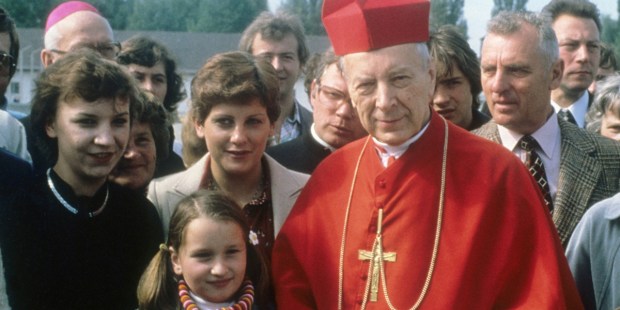
Dk. Michał Lubowicki – Poland – published on 05/28/21
On this feast of Venerable Stefan Wyszyński, mentor of JPII, we can marvel at the courage with which he had to live his faith.
Devotion to Our Lady of Fatima was especially abhorrent to the Communist regime in Poland. This was so much the case that in 1978, the government in Communist Poland “arrested” the statue of Our Lady of Fatima, which had been brought to the country.
Why did the Communists dislike Fatima so much?
Poles associate devotion to Our Lady of Fatima first and foremost with Pope John Paul II, especially after his miraculous survival of the assassination attempt on May 13, 1981.
But the message of Fatima was known in Poland much earlier.
Words about the 1917 Marian apparitions in Portugal reached Poland in the period between the World Wars.

PARTNER CONTENT
The Marian legacy of Saint Luke in Malta.
Right after World War II, in October 1945, Polish bishops responded to the call of Pope Pius XII and decided to dedicate Poland to the Immaculate Heart of the Virgin Mary, something Mary had asked for during the apparitions. Efforts were made in this respect primarily by Primate of Poland, Servant of God Cardinal August Hlond.
The dedication took place in three stages: first in Poland’s parishes on July 7, 1946, then at a diocesan level on August 15, and finally on September 8, the entire country was dedicated to the Blessed Virgin Mary’s Heart.
These events were attended by a new member of the Polish Bishops’ Conference, Stefan Wyszyński, ordained to the episcopate on May 12, 1946. While his life and ministry was primarily tied to Our Lady of Jasna Góra, the message of Fatima was by no means alien to him. The Millennium Primate, as Wyszyński was called, spread devotion to Our Lady of Fatima and the related First Saturdays Devotion.
Fatima frowned upon
The Communist regime in Poland was particularly opposed to Our Lady of Fatima because during her apparitions, the Blessed Virgin Mary called for prayers for the conversion of Russia, directly called Communism a “godless propaganda,” and referred to Bolshevik crimes.
Not surprisingly, all forms of devotion connected with Fatima were looked upon very unfavourably by the authorities, who significantly restricted and sometimes even prohibited them. For example, all publications on the subject were heavily censored and the printing of some was banned.
Violation of such a prohibition during the Stalinist period earned Brother Innocent Wójcik, a Franciscan from Niepokalanów, a two-year prison sentence.
A persona non grata from Fatima
The Communist regime did not even allow statues of the “Beautiful Lady” of Fatima to enter the country.
There were only a few who managed to sneak in. In 1961, Primate Wyszyński donated to the Pallottines of Zakopane a statue received as a gift from the custodian of Fatima. It stands to this day in the famous shrine in Krzeptówki in the Polish Tatra Mountains.
The second statue which arrived in Poland was one of the 45 statues consecrated in 1967 at Fatima by Pope Paul VI. They were intended to go to different countries, including Poland. However, another two years had to pass before one Fr. Ciurej managed to smuggle the statue into Poland, only because he was using his US passport.
Cardinal Wyszyński had the statue of Our Lady of Fatima transferred to Niepokalanów. However, for fear of confiscation, it was not displayed for public devotion in the church but kept in the cloister of the Franciscan monastery.
The Blessed Virgin Mary “arrested”
The most interesting story, however, is connected with the third image, which arrived in Poland by air in early May 1978. It was the statue of Our Lady making the “World Pilgrimage of Peace,” which started in Fatima.
The members of the so-called “Blue Army” who brought the statue of Our Lady were allowed to leave the plane. However, by order of the Communist regime, the statue itself was detained on board, locked in the cockpit.
For almost a week, the plane with the “arrested” Lady of Fatima stood on a closed runway, guarded by armed guards. It then flew away, the statue still on board.
Mother never leaves
Seeing no prospects for recovering the statue and continuing their pilgrimage across Poland, the organisers of the “World Pilgrimage of Peace” asked the Franciscans from Niepokalanów to make a wire outline of the statue from their monastery. This painted wire outline was placed on a base with the inscription “Mother never leaves” and began its pilgrimage through Communist Poland.
This was how Our Lady of Fatima visited Warsaw, Katowice, Krakow, and Jasna Góra, where it was welcomed by the Primate and 75,000 faithful.
Patroness of building permits
More and more people learned about the “detention” of Our Lady. Then, most probably, the information about this unpleasant incident crossed the borders of the country, causing quite a stir and raising criticism of the restriction of Poles’ religious freedoms.
To curb conflict and improve its image in the eyes of public opinion, the Communist regime asked the Primate to once more bring the statue of Our Lady of Fatima to Poland and to resume the “World Pilgrimage of Peace” on Polish soil.
Embracing this unique opportunity, and seeing that the regime started to “care” for the visit of Our Lady, the Cardinal Primate made it conditional on one thing: the Communists had to immediately consent to the construction of as many as 28 new Catholic churches throughout Poland.
One can only imagine how reluctant the authorities were to give this consent, yet they did so without delay. In the meantime, the Archbishop of Krakow had become Pope and the following summer, no longer hindered, the statue of Our Lady of Fatima consecrated by John Paul II arrived in Poland to begin its long pilgrimage through the country’s dioceses and parishes.

Read more:New Vatican research details John Paul II’s 1946 exit from occupied Poland
How to fight laziness with St. Jerome


Mathilde De Robien – published on 05/29/21
The saints can teach us how to manage our emotions and face our struggles.
Here we present another in our series of articles about how the saints can help us overcome vice and practice virtue, guided by Edwige Billot, author of a recent book about guidance from the saints on how to handle our emotions (published in French: “Et si les saints nous coachaient sur nos émotions?”).
Idleness, mother of all vices
Procrastination, sloth, laziness … These are temptations that are familiar to us, and that need to be fought. Indeed, for St. Paul, laziness is a sin against charity.
“By not doing what could be expected of us, we hurt others and ourselves, since we do not use our talents,” says Edwige Billot. Moreover, idleness is dangerous insofar as it facilitates temptations.
“Idleness is the mother of all vices,” warns popular wisdom. And that’s not the only source that issues us such a warning. The Scriptures don’t mince their words:
- “The idler is like a filthy stone, and every one hisses at his disgrace. The idler is like the filth of dunghills; anyone that picks it up will shake it off his hand.” (Sirach 22: 1-2)
- “The craving of the lazy person is fatal, for lazy hands refuse to labor.” (Proverbs 21:25)
- Scripture praises the woman “who does not eat the bread of idleness.” (Proverbs 31:27)
St. Paul isn’t any softer on lazy people who shirk their duty while enjoying diversions:
“Anyone unwilling to work should not eat. For we hear that some of you are living in idleness, mere busybodies, not doing any work. Now such persons we command and exhort in the Lord Jesus Christ to do their work quietly and to earn their own living.” (2 Thessalonians 3:10b-12).

PARTNER CONTENT
The Marian legacy of Saint Luke in Malta.
St. Jerome, a doctor of the Church and translator of the Bible into Latin in the 5th century, spoke of the evils of laziness and the importance of keeping busy. In a letter to Rustics (125), he says,
“‘Every one that is idle is a prey to vain desires.’ In Egypt the monasteries make it a rule to receive none who are not willing to work; for they regard labor as necessary not only for the support of the body but also for the salvation of the soul.”
To this end, he recommends an infallible remedy for not falling into temptations linked to idleness: Remain in action at all times, so the devil doesn’t have the chance to snatch an idle moment. “Live in such a way that the devil will always find you busy,” he writes.
If we are busy doing good, then we are less available to the solicitations of evil. It’s advice we can take to heart today, too.
The State of Religion in 21st Century America with Dr. David Ayers

Eric Sammons sits down with Professor of Sociology David Ayers, Ph.D. to discuss the state of religion in America today.
Specifically, they attempt to answer the following:
- Why is religion collapsing in America since 2000?
- What impact on religion will COVID have going forward?
- Why do even those who remain Catholic or Evangelical Protestant reject the moral teachings of those religions?
- What is the path forward for religion?
Links:
- https://stream.org/the-vital-signs-of-american-christianity-critical-but-not-terminal/
- https://ifstudies.org/blog/cohabitation-among-evangelicals-a-new-norm
- https://ifstudies.org/blog/number-9-in-2019-sex-and-the-single-evangelical
- https://news.gallup.com/poll/341963/church-membership-falls-below-majority-first-time.aspx
- https://ericsammons.com/the-churchs-dunkirk-moment/
- https://www.crisismagazine.com/2021/will-catholics-ever-return-to-mass
- https://www.crisismagazine.com/2021/america-is-a-pagan-nation-now-what
St. Joan of Arc: Girl Power or Godly Power?

The Dauphin had heard of this girl from Domrémy who wished to see him. Rumor had it she won over the commandant of Vaucouleurs by predicting the outcome of the Battle of Rouvray. How intriguing. The rough soldiers who were bringing her apparently called her la Pucelle, “the Maid.” How amusing. The frivolous Dauphin, Charles VII, thought it a fine jest and hid giggling among his courtiers when she arrived. The girl entered, striking and sturdy in men’s garb and cropped hair, strode directly to the Dauphin, and said, “God has sent me to help you and the kingdom of France.”
So spoke a seventeen-year-old girl in 1429. And the battle to help the kingdom of God on earth is far from over—and it frequently involves a controversy of femininity. God often sends a woman to do His will in surprising ways, whether a Virgin to bear a Child or a farmgirl to lead an army. As a woman, Joan of Arc clashed for the good of Church and country, even as she was persecuted for her sex and her piety. And that persecution goes on and is as ancient as the mysterious tradition of the battle maiden, whether Amazon or Valkyrie.
But the reason why St. Joan stands out as a heroine is not because she was a prototype of women’s liberation, but because she carried out the orders of God under unusual circumstances.
Having undertaken the journey to Chinon through lands held by England and the dukes of Burgundy who disputed Charles VII’s pedigree, Joan unflinchingly told the Dauphin she had been commanded by God, Michael the Archangel, and the saints Catherine of Alexandria and Margaret of Antioch to undertake three tasks—to save the city of Orléans from the nearly one-hundred-year English invasion, to see the Dauphin crowned and consecrated at Reims, deep in enemy territory, and to force the English out of France.
The embattled heir to the throne of France stared at the strange, country girl standing before him, not knowing what to think. It was an impossible proposition. Who was this girl—this unlearned, illiterate farmer’s daughter? What did she know of military tactics and strategies? “I am not afraid,” the Maid said, “for this I was born.” Her fearlessness struck fear in the Dauphin. He clad Jeanne d’Arc in white armor, gave her a sword, a charger, and a banner bearing the names of Jesus and Mary. Though it was impossible, the Dauphin put Joan before his army. Every possible option had been tried and had failed. What else was left but the impossible?
With God, however, nothing is impossible. Joan of Arc led her army victoriously to the walls of besieged Orléans and took the city on St. Michael’s feast day. The forces of Patay and Troyes then fell before the Maid of Orléans, who soon stood with tears in her eyes in the cathedral of Reims as Charles VII was anointed King of France. In nine months, Joan had initiated the salvation of France.
While Joan might be seen as a medieval forerunner of the feminist movement, she embodied, in fact, a genuinely feminine attitude. She was meek and practical in her strength and determination, despite her sword and armor, dutifully doing the difficult task given to her by God with a feminine presence and poise that men often need. The attitude of women taking the lead today, on the other hand, is charged with a masculine domination. Feminine roles, but not feminine virtues, are extolled and given immunity to a degree that actually threatens female identity in a way that Joan of Arc decidedly did not.
Joan clearly fought selflessly for God and country, not “women’s rights,” “girl power,” or “gender equality.” In short, Joan of Arc is a powerful symbol because she was good and strong, not because she fought and led men as a woman. The sex-based exoneration women receive in the name of an equality that really seeks equivalency imbalances the natural relations of the sexes. The role of women is too significant in the grand scheme of things to isolate, for it loses its power without the role of men.
In bringing about a God-ordained balance in her time, St. Joan is a shining example of femininity, even though she is one in shining armor. Cooperation, not competition, is the basis of gender equality—for, though men and women are equal in fundamental ways, they are not equivalent. The desire to sanctify and safeguard the dignity of women is good, so long as it does not serve to dethrone the dignity of women by encouraging or pressuring them to become like men or the masters of men. The end is to preserve the Kingdom of God on earth, and for that end, the servants of God, men and women alike, must strive together.
Despite Joan’s unprecedented victory, the apathetic Charles VII neglected to launch her against Paris while the army’s morale was high. When an assault was finally launched, Joan failed to take the city. As efforts were underway to make further assay for Paris, Joan was captured by the Burgundians and sold to the English as a prisoner. After several escape attempts from her mocking captors, Joan was dragged before fifty clerical judges to stand trial as a heretic.
Determined to delegitimize the king Joan had put on the throne of France, her accusers had difficulty in their illegal proceedings due to the sharp intelligence of their victim. Joan deftly answered questions of tremendous theological complexity and subtlety, giving her accusers little ground on which to base their accusation as they pressured her to confess to witchcraft, fabrications, and a plot to dress like a man
At last, they found Joan guilty of heresy, apostacy, and idolatry, and condemned her to death. Eight hundred men-at-arms escorted the girl in a cart through Rouen before she was bound to the stake. A crucifix was held up to her through the fire as Joan burned to death, she calling to Him who had called to her. It was then that a soldier saw a white bird flash from the flames and fly to heaven.
St. Joan of Arc is a model for our day, for we have a war to win as well, and one of the battles is over womanhood, where women are reduced to being targets, tools, or tyrants. Though all are victims in one way or another, women and girls can be doubly so as they are the ones largely besieged and used as the vehicles of this manipulation which is portrayed as fulfillment. The display many women put themselves on is not emblematic of the empowering, free ideal that it is made out to be. It is servitude to a system, an ideology that devalues women in the name of power. Without reservation, we run the risk of ruination. The more “gender-bender” noise and spectacle and vulgarity, the more the pain and sorrow can be drowned out—for a while.
Though part of St. Joan’s scandal was that she dressed and fought like a man—dubbed errant then and “equality” today—she was notwithstanding a pillar of feminine virtue and strength that defended the sacred things of God entrusted to mankind as only a woman could. Her story is one to remember well, especially on May 30, the day she died burning at the stake at nineteen years of age, a prisoner to powers that imprison still, though their enslavement is termed “liberation.”
As the struggle to define and deploy sex rages on, with innumerable prisoners and casualties, the proper place for Catholics is in the front lines, for similarly sacred things are vulnerable to similar assault. All the while, St. Joan of Arc stands as an icon for us all, despite the incongruities of the ages, because she fearlessly did the will of Heaven, not because she did something no one thought a woman could do. The matter of sex was a mere accident in the story of Joan of Arc. What was essential was Joan’s bravery and holiness—and it is in these that liberation lies, not just for women, but for the human race as a whole.
Biden blasts Texas voting bill: ‘An assault on democracy’
BY TAL AXELROD – 05/29/21 03:29 PM EDT2,259Share to Facebook Share to Twitter
Just In…
- Is Biden trying to avoid congressional review of Russia sanctions?OPINION — 11M 7S AGO
- White House urges court to toss lawsuit preventing states from importing prescription drugsCOURT BATTLES — 12M 21S AGO
- UK’s Boris Johnson gets married in private ceremonyIN THE KNOW — 49M 25S AGO
- How to get more rural kids to college? Universal broadband would helpOPINION — 1H 11M AGO
- Rep. Connolly calls for Biden to create Jan. 6 commissionHOUSE — 1H 21M AGO
- Sunday shows preview: Infrastructure push revs upSUNDAY TALK SHOWS — 1H 31M AGO
- Hillary Clinton responds to story about ‘posh’ restaurant outing with vaccine PSABLOG BRIEFING ROOM — 2H 6M AGO
- Texas pension bill plays politics with retirees’ moneyOPINION — 2H 11M AGO
VIEW ALLRelated News
- SponsoredLaunch your career with help from this…
- Biden says he will release findings of…
- China: Biden playing politics with call for…
- Here Is What Full Mouth Dental Implants…Sponsored | Dental Implants | Search Ads
by https://imasdk.googleapis.com/js/core/bridge3.462.0_en.html#goog_128516759Volume 90%This video will resume in 30 seconds
President Biden on Saturday blasted a new bill being considered in Texas that would restrict voting in the Lone Star State, panning it as “un-American.”
“Today, Texas legislators put forth a bill that joins Georgia and Florida in advancing a state law that attacks the sacred right to vote. It’s part of an assault on democracy that we’ve seen far too often this year—and often disproportionately targeting Black and Brown Americans,” Biden said in a statement.
“It’s wrong and un-American. In the 21st century, we should be making it easier, not harder, for every eligible voter to vote,” he added.
The president’s statement is just the latest rebuke from Democrats over a string of bills being mulled in GOP-led states that look to impose new restrictions on voting.
The Texas bill, which was finalized Saturday, would limit early voting hours and local voting options, ban 24-hour voting and curtail the use of ballot drop boxes, among other provisions.
Biden’s statement comes as Republicans in Texas began circulating a draft of the legislation, with votes on it expected to take place in both legislative chambers in the coming days.
Republicans in Texas and across the country have been touting the need for new “election integrity” measures to ease GOP concerns over ballot security. The worries have boiled up amid repeated, evidence-challenged claims from former President Trump and his allies that the 2020 presidential election was marred by widespread fraud despite several recounts and audits confirming Biden’s November victory.
Democrats have condemned the nationwide effort, arguing that Republicans are merely trying to limit the number of people who can vote after losing the White House and Senate last year.
The party has responded with its own voting rights measures, including the For the People Act and the John Lewis Voting Rights Advancement Act. The For the People Act would requires states to offer mail-in ballots and a minimum of 15 days of early voting while calling for online and same-day voter registration, and the legislation named after civil rights icon John Lewis would reauthorize and strengthen the 1965 Voting Rights Act.
“I call again on Congress to pass the For the People Act and the John Lewis Voting Rights Advancement Act. And I continue to call on all Americans, of every party and persuasion, to stand up for our democracy and protect the right to vote and the integrity of our elections,” Biden said Saturday.
Texas joins several other states, including Arizona, Florida and Georgia, in either passing or mulling new election restrictions. Some states have already faced a string of lawsuits over their bills, and Democrats on Saturday warned that Texas will be sued too if its bill is greenlighted.
“If this is enacted Texas will be sued,” tweeted Democratic election lawyer Marc Elias.
